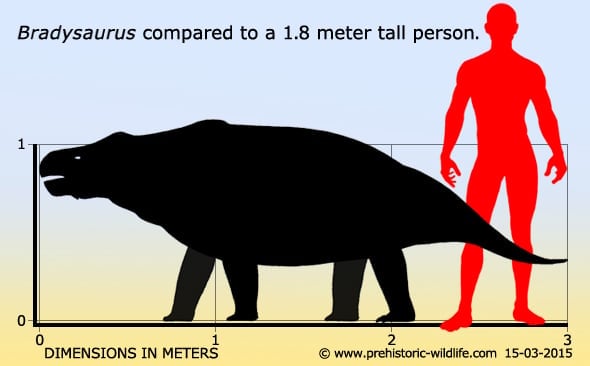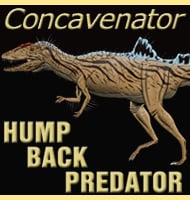In Depth
Bradysaurus is a primitive genus of pareiasaur that gives an indication to how the pareiasaurs developed. The teeth of Bradysaurus have little in the way of cusps, and are also fairly high crowned. The scutes (osteoderms) in the skin are also not as well developed as those of later forms, which indicates that the pareiasaurs had a continuing and greater need for protection against the teeth of gorgonopsid predators.
Apart from the more primitive features, Bradysaurus was still a fairly typical pareiasaur. The body was squat and heavily built, and was supported by four stout legs that sprawled out to the sides. The head was also equally heavily built with skulls being around forty-two to forty-eight centimetres long. The strong fairly large for the time body, strongly built skull and bones and osteoderm armour in the skin were the best defence against all but the largest predators of the time.
Bradysaurus has in the past had many species assigned to the genus. Today, only the type species B. baini as well as B. seeleyi are considered to be valid. Key differences between these two species include B. seeleyi having between to twenty pairs whereas B. baini only has fifteen to sixteen pairs, and the jugals (cheekbones) of B. seeleyi are much larger and more robust than those of B.baini. Remains of B. baini are more common, than B. seeleyi.
Further Reading
- On the Nomenclature of the South-African Pariasaurian - David M. S. Watson - 1914. - The Fauna of the Tapinoephalus Zone (Beaufort Beds of the Karoo) - L. D. Boonstra - 1969.










